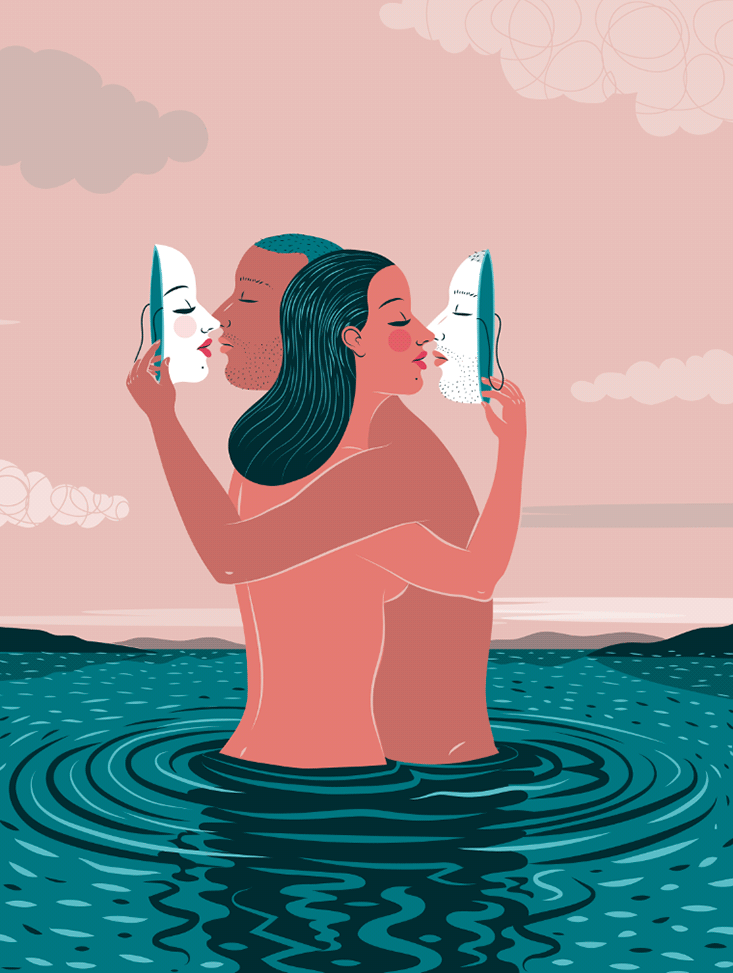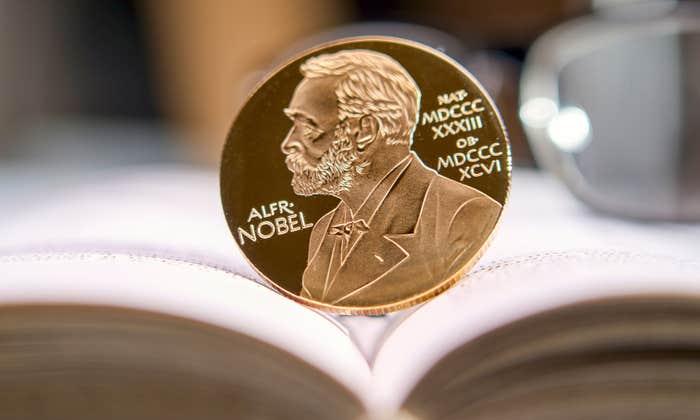An American man and a French woman meet on a train in Eastern Europe. They live on different continents. But before the sun comes up, they have spent the night together. What happens next?
You’d expect the answer to be, nothing. It’s just a one-night stand in a faraway place. But in director Richard Linklater’s trilogy, Before Sunrise, Before Sunset, and Before Midnight, their romance blooms into commitment and kids.
While some might dismiss this as Hollywood romanticism, it is actually a common experience. For the past five years, my colleagues at Match.com and I have conducted an annual national study called Singles in America, and in each year, a majority of survey respondents have reported having a one-night stand. And 27 percent of our 2014 respondents reported having had a one-night stand turn into a long-term, committed partnership.1
We humans are a romantic tribe. Over 54 percent of American singles (which make up over half of the adult population) believe in love at first sight; 56 percent believe laws should make it easier to wed; 89 percent believe you can stay married to the same person forever. And, remarkably, 33 percent of American singles believe it’s ok to leave a “satisfactory marriage” if you are no longer passionately in love. In America, as in much of the post-industrial world, romantic love is in full bloom.
Yet between 43 and 50 percent of American marriages will fail, and some 67 percent of American cohabiting couples report that they are terrified of the social, legal, emotional, and economic consequences of divorce.2 Divorce, men and women wanly joke, is in the drinking water.
So I have come to believe that—motivated by romance and afraid of what sociologist Andrew Cherlin calls the marriage-go-round—today’s singles are ushering a long pre-commitment stage into the courtship process. Fast sex is part of the package. Couples want to get to know everything about a potential life partner before they tie the knot. Welcome to the age of slow love.

Singles in America is not a poll of the Match.com population. Instead, it probes an annual representative sample of over 5,000 Americans, based on the U.S. census. To date we have queried over 25,000 men and women—to my knowledge, the largest national representative study of singles. And what we have found is an abundance of caution.
Take hooking-up—an uncommitted sexual encounter between two people who are not currently in a romantic relationship with one another. Hooking up appears reckless. Certainly those who engage in one-night stands are risking sexually transmitted infections, unwanted pregnancy, and emotional trauma. Nevertheless, in the 2014 Singles in America study, 66 percent of single men and 50 percent of single women reported that they had engaged in a one-night stand—and these numbers have varied little over the past five years. Why do we hop into the sack with someone we hardly know?
Perhaps because you learn a lot about a person between the sheets. You might even kick-start a real relationship: Any stimulation of the genitals promotes dopamine activity, which can potentially push you over the threshold into falling in love. At orgasm, oxytocin and vasopressin—neurochemicals linked with feelings of attachment—spike. With just one night of casual sex, risky as it is, you may win life’s greatest prize: a devoted mating partner.
Romantic love is like a sleeping cat; it can be awakened at any time. Feelings of deep attachment, however, take time.
Nevertheless, few race to the altar after a night in bed together. Instead, many take the next cautious step, a friends with benefits relationship—commitment-lite. In this sexual arrangement, a pair has coitus when convenient, but they don’t appear in public as a couple. In 2013, 58 percent of men and 50 percent of women in our Singles in America study reported that they’d had a friends with benefits relationship, including one in three people in their 70s. And 28 percent of our 2014 participants had had a friends with benefits relationship turn into a long-term partnership.
Next, many couples move in together—another cautious step toward permanent pairing, which first entered the public discourse with a famous 1966 article by anthropologist Margaret Mead. Mead suggested that a young couple with no immediate plans to reproduce should first make an “individual marriage,” a legal tie that excluded bearing children, did not imply a life-long commitment, and had no economic consequences should the couple part. A “parental marriage” could come later if they so decided.
“Living together,” a version of the first step of this two-step marriage, emerged in the 1970s; and today what had been scandalous has become routine. In 2012, 58 percent of those in our Singles in America study reported that they have lived with one to five partners outside of wedlock. And as the Pew Research Center notes, some 64 percent of Americans believe this living arrangement is a step toward wedding.3
But discretion still reigns after partners have agreed to marry. In 2014, 36 percent of singles in our Singles in America study said they wanted a pre-nuptial agreement.
Even marriage is becoming provisional. Civil partnerships in England, civil unions in the U.S., and de facto partnerships in Australia enable a couple to start and end a partnership relatively easily. France’s pacte civil de solidarité, or PACS, is particularly intriguing. Enacted in 1999 primarily to enable gays and lesbians to obtain a legal means of attachment without conventional matrimony, it immediately became popular among heterosexuals. All you do is go to a federal office with your partner and sign some papers to initiate a legal relationship. If you want to end it? Send in a form.
One-night stands; hooking-up; friends with benefits; living together; pre-nups; civil unions. These all spell caution. But they also spell logic—because our brain is soft-wired to attach slowly to a partner.
The basic circuits for romantic love lie in primitive regions of the brain, near those that orchestrate thirst and hunger. Romantic love is a drive—one of three basic brain systems that evolved to direct our fundamental human mating and breeding strategy. The sex drive predisposes you to seek a range of mating partners; romantic love enables you to focus your mating energy on a single individual at a time; and feelings of attachment incline you to form a pair-bond at least through the infancy of a single child. Feelings of romantic love and deep attachment to a partner emerge in a pattern highly compatible with the spirit of the times—that is, with slow love.
I say this because my colleagues Lucy Brown, Art Aron, Bianca Acevedo, and I have put new lovers into a brain scanner (using functional Magnetic Resonance Imaging, or fMRI) to measure neural activity as these men and women gazed at a photo of their sweetheart. Those who had fallen madly in love within the past eight months showed activity in brain regions associated with energy, focus, motivation, craving, and intense romantic love. But those who had been passionately in love for eight to 17 months also showed activity in an additional brain region associated with feelings of attachment.4
Sexual liberalism has aligned our courtship tactics with our primordial brain circuits for slow love.
Romantic love is like a sleeping cat; it can be awakened at any time. Feelings of deep attachment, however, take time, and they can endure. In another of our studies, led by Acevedo, we put 17 men and women in their 50s and early 60s into the brain scanner. These participants had been married an average of 21 years, and all maintained that they were still madly in love with their spouse. Their brains showed that they were: They were deeply attached as well.
We have even begun to map some of the brain circuitry responsible for this marital happiness. In our study of long-term lovers, those who scored higher on a marital satisfaction questionnaire showed more activity in a brain region linked with empathy, a trait they had most likely retained from their initial passion.5 Moreover, when psychologist Mona Xu and her team used my original research design to collect similar brain data on 18 young men and women in China, she found that those who were in love long term showed activity in a brain region associated with the ability to suspend negative judgment and over-evaluate a partner,6 what psychologists call “positive illusions.”7 Much like men and women who have just fallen madly in love, these long-term partners still swept aside what they didn’t like about their mate and focused on what they adored.
Because feelings of attachment emerge with time, slow love is natural. In fact, rapidly committing to a new partner before the liquor of attachment has emerged may be more risky to long-term happiness than first getting to know a partner via casual sex, friends with benefits and living together. Sexual liberalism has aligned our courtship tactics with our primordial brain circuits for slow love.
I am optimistic about the emergence of slow love. During our long agrarian past, our forebears married to please God, the local community, and their extended family. Spouses were tied to the land and to one another. Where could you go with a ton of wheat? A host of associated beliefs about the sexes emerged, including strictly arranged marriages, virginity at marriage, till death do us part, and the credo that a woman’s place was in the home. Unchained from the constraints of farm living, today’s singles are turning inward, choosing partners for themselves—and taking time to wed. Where marriage was the beginning of a partnership in farming societies, today it is the finale.
Slow love appears to be working, too. In 2012, with Match.com, I surveyed 1,095 married Americans (not on their dating site, of course). Among our questions was: “Knowing what you now know about your spouse, would you marry the same person again?” Eighty-one percent said yes. Moreover, 76 percent of these men and 73 percent of these women said they were still “very much in love.” And a 2013 survey of more than 12,000 adults in 15 countries established that 78 percent of married men and women were also “happy.”8
The marriage revolution going on today may actually enable more happy partnerships. Slow love is, after all, in our DNA.
Dr. Helen Fisher is a Biological Anthropologist and Senior Research Fellow at The Kinsey Institute. She has written five internationally best selling books on love and personality and is currently Chief Scientific Advisor to Match.com.

References
1. All statistics from the Singles in America survey are unpublished, and provided courtesy of Helen Fisher.
2. Miller, A.M., Sassler, S. & Kusi-Appouh, D. The specter of divorce: Views from working- and middle-class cohabitors. Family Relations 60, 602-616 (2011).
3. Pew Research Center: Social and Demographic trends. The decline of Marriage and Rise of New Families. http://www.pewresearch.org/ (2010).
4. Aron, A., et al. Reward, motivation and emotion systems associated with early-stage intense romantic love. Journal of Neurophysiology 94, 327-337 (2005).
5. Acevedo, B., Aron, A., Fisher, H.E., & Brown, L.L. Neural correlates of marital satisfaction and well-being: Reward, empathy, and affect. Clinical Neuropsychiatry 9, 20-31 (2012).
6. Xu, X., et al. Reward and motivation systems: A brain mapping study of early-stage intense romantic love in Chinese participants. Human Brain Mapping 32, 249-257 (2011).
7. Zentner, M.R. Ideal mate personality concepts and compatibility in close relationships: A longitudinal analysis. Journal of Personality and Social Psychology 89, 242-256 (2005).
8. Ipsos. Valentine’s Day: Correlations Between Relationship Status and Happiness, Financial Situation. http://www.ipsos-na.com/ (2014).



























